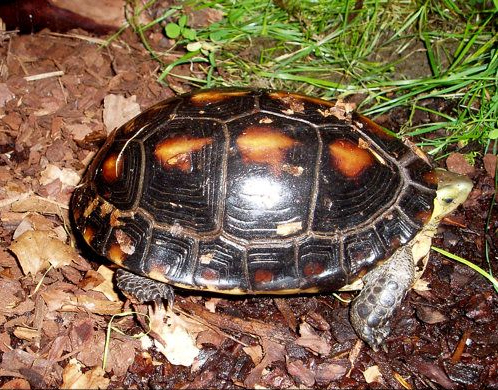Facts About Yellow-margined Box Turtle
The Chinese box turtle, also known as the yellow-margined or golden-headed turtle, is a captivating species of Asian box turtle, scientifically named Cuora flavomarginata. This turtle is easily identifiable by its highly domed shell, dark brown carapace, and plastron. A distinctive cream-yellow stripe runs along its vertebral keel, and the edges of its plastron are subtly pigmented. Its limbs are brown, and its head is pale green adorned with yellow lines extending backward from the eyes. Thanks to a hinge and ligaments, these turtles can bring their plastron up to meet the edges of their carapace, providing them with additional protection.
Cuora flavomarginata is found in Central China, particularly in provinces along the Yangtze River. They also inhabit Taiwan and Japan's Ryukyu Islands. These turtles are omnivores, consuming a diverse diet that includes earthworms, snails, fruits, vegetables, and invertebrates such as larvae and slugs.
Regarding their scientific history, the species was first described as Cistoclemmys flavomarginata in 1863 by John Edward Gray. It was subsequently reclassified to Cyclemys and ultimately to Cuora. According to the Turtle Taxonomy Working Group's 2012 Checklist, Cuora flavomarginata comprises two recognized subspecies: Cuora flavomarginata flavomarginata and Cuora flavomarginata evelynae. Notably, these turtles can hybridize with Mauremys japonica in captivity and with female Ryukyu black-breasted leaf turtles both in captivity and in the wild.
